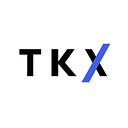Vesta Finance: The Next MakerDAO? | TKX Weekly
by @Guaaronnnn
editor @FriedWagyuu
Intro
Stablecoins, especially algorithm stablecoins, is often deemed the holy grail in crypto. The business model is easy to understand with a great network effect. However, after the Luna crash, people started to lose hope and over-collateralized stablecoins regains the market share.
Vesta Finance is a layer 2 Collateralized Debt Position (CDP) protocol natively built on Arbitrum. Users can deposit assets as collateral to mint stablecoin based on their collateralization ratio (CR). $VST is a USD-pegged stablecoin.
Highlights
- Multi-collateral: Users can deposit ETH, gOHM, GMX, DPX, and GLP to mint $VST
- Low Collateralization Ratio: The minimum collateralization ratio is lower than other protocols like MakerDAO (for ETH, 110% vs 170%)
- Dynamic Interest Rate: Vesta introduced a mechanism called Vesta Reference Rate to stabilize the peg
- Mobilized Collateral: For collateral like GMX and GLP, they are directly deposited into GMX to earn the native yield
- Stability Pool: $VST is in the stability pool to offset the liquidated debt when liquidation occurs
Mechanism
Vesta is a collateralized debt platform. Users can lock up collateral and issue $VST to their own Ethereum address. $VST is economically geared towards maintaining a value of 1 VST = 1 USD. To maintain the peg, there are two properties:
Over-collateralization
Similar to MakerDAO, every $VST is always over-collateralized by locked assets. Collaterals can be ETH, gOHM, GMX, DPX and GLP. Most of them are notable Arbitrum protocol assets. Here is the minimum collateral ratio of each vault:
Compared to MakerDAO, Vesta’s vault minimum collateral ratio (MCR) is generally slightly lower. With lower MCR, capital utilization can go higher. MakerDAO offers different MCR with different interest rates to users. The lower the MCR, the higher the interest rate to pay.
Vesta Reference Rate (VRR)
VRR is a price stabilizing mechanism driven by the dynamics of supply and demand forces of $VST around the peg. When $VST is below/above the peg (too much $VST supply/demand in the market), a higher/lower VRR is charged to borrowers to incentivize them to repay their loans/borrow more.
Liquidation
The liquidation mechanism is always the critical part. Vesta’s liquidation system is Stability Pool. Stability Pool contains $VST which is deposited by users. The function is to absorb the under-collateralized debt, in other words, to repay the liquidated borrower’s liability. The liquidation system has two steps:
- The liquidated debt is cancelled with the same amount of $VST in the pool (which is burned as result). If the Stability Pool is emptied or it is not big enough to absorb the debt, then step 2
- The system will try to cancel as much debt as possible and then redistributes the remaining liquidated collateral and debt across all active vaults.
Either way, the liquidated asset is proportionally distributed to depositors. For each of the vaults in Stability pools, there are different liquidation bonuses ranging from 10% to 15%.
Mobilising Collateral
Vesta is open to staking opportunities for their collaterals if they can be immediately withdrawn and has high smart contract security. Currently, only deposited GMX and GLP are open to capture the yield.
Risks
Concentrated TVL
gOHM and GLP take a huge percentage of Vesta’s TVL. gOHM takes a significant amount of the total collateral because Vesta is part of the Olympus Incubator program. For GLP, Vesta provides holders with a way to collect yield while mobilizing the LP assets.
Weak Peg
The price of $VST as of writing this article is $0.991, slightly off from $1. From the Curve VST-FRAX pool, the liquidity is not ready for large-size trade.
Final Thoughts
Overall, Vesta is an interesting protocol. However, Vesta’s governance token $VSTA doesn’t have many use cases and utility. In the Arbitrum DeFi ecosystem, many protocols share the fee with its token holders while $VSTA doesn’t, which is difficult to win others over. Also, the use cases of $VST are few at the moment, as composability and utilization are critical in DeFi.
Deposit GLP to earn a yield to borrow $VST and deposit into Stability Pool is a good strategy to accumulate GLP with a 10% discount while enjoying high GLP APY. Since Feb 22 the price of $VST has been between $0.95 to $1.11.
The collaterals heavily rely on gOHM and GLP at the moment, both together take 85% of the total collateralization. We are willing to see more assets as collateral to increase its TVL.
Reference
https://docs.vestafinance.xyz/
https://dune.com/defimochi/vesta-finance
https://medium.com/@VestaFinance
https://twitter.com/defi_mochi/status/1607354502990172160
About TKX Capital
Website: TKX.Capital
Twitter: @TKXCAPITAL
Build with us: HI@TKX.CAPITAL
Note: TKX Capital do not offer any financial advice for retail investors and we have no affiliation with projects in this research.
